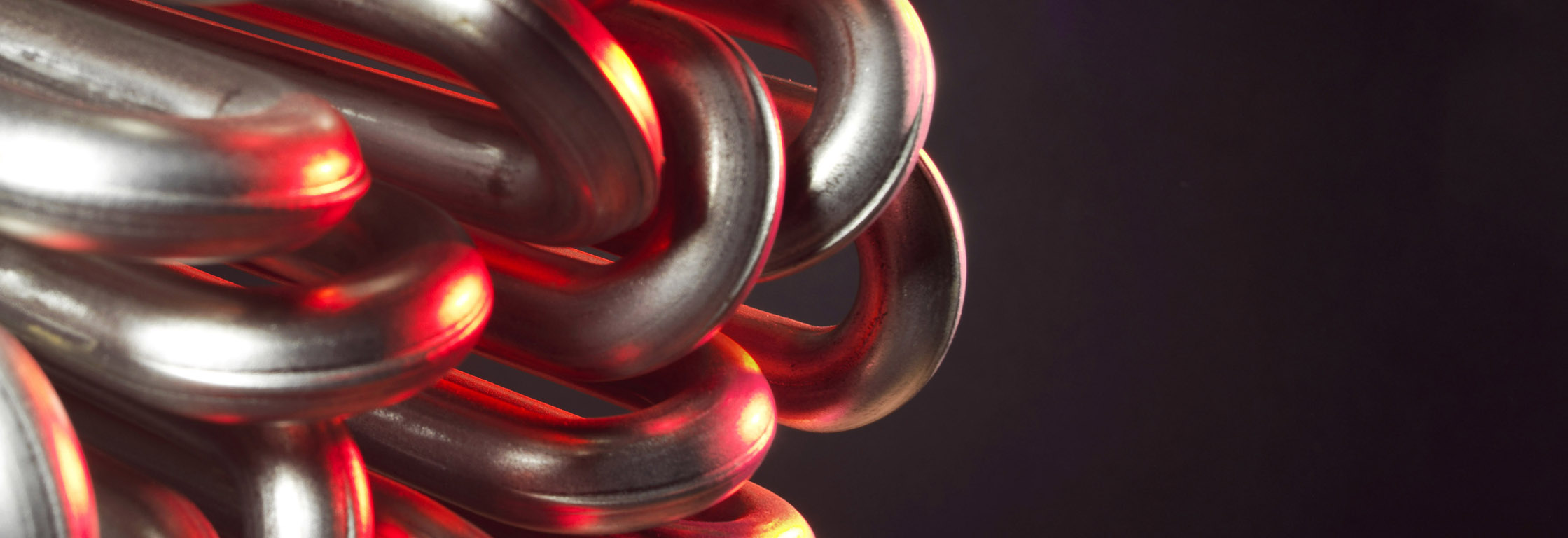- CETAL always advises or requires, that the flow of medium flowing through the heater is controlled.
- A flow meter, or a low flow safety switch are to be set on the piping upstream of the heater, on site. CETAL Local Control Panel, always foresee to get this low flow safety contact, for tripping the heater power, in case of too low flow.

Frequently Asked Questions
- CETAL always uses strong wooden case for the heater and panel, packed in MIL133 sealed bag with dessicant, for exportation packing.
- This is to avoid electrical parts being exposed to humidity condensation during transportation, and heater showing low isolation value after long-time exposure to humidity.
- All spare parts are packed in the same manner, in separate wooden cases, packed in sealed bags, with number of drying bags calculated upon volume and storage time.
- Woodens cases must be stored in a dry, ventilated warehouse, and not being rolled up to its storage place, or overloaded by cases stacked on them.
Basic maintenance actions to be taken are:
- Check every year the ohmic value of the heater banks between phases.
- Check insulation value between each phase and earth, and between phases.
- Check the pressure drop through the heater at max flow and nominal outlet temperature, as pressure drop increase is a sign of caulking, cocking, clogging of fluid on the heating element bundle.
- From long experience with many Oil&Gas companies, CETAL always sets minimally one over-temperature sensor on each power step of each heating bundle. Most of time two.
- The sensors are located on the upper part of the bundle , on the heating element wall, at the highest anticipated temperature area (near the fluid outlet nozzle commonly).
- CETAL advice is to use duplex sensor to have one working, one in spare for each safety sensor.
- HART protocol, Smart 4-20mA transmitters can be added, upon request, to allow in-situ checking, and setting.
- To avoid power tripping of the heater in case of quick flow reduction, CETAL advices to monitor the heater power by a Thyristor stack , with fast response to signal change. Cetal also uses to alarm level high temperature switches , the first level initiating alarm, cutting the thyristor input, signal, the second tripping the main power .
- For gas heaters in oil&gas field, CETAL always distance tubes (allowing heating element expansion in length upon temperature), fully strength welded to the tubesheet, whereas the heating elements also being full seal welded to the distance tubes, before they are inserted and welded to the Ex connection box. Thus, the gas can never enter the connection box and cause an explosion.
- A gas detector in Ex connection box is not required for us, due to safe design.
- CETAL, thanks to its 50 year experience in heater design, select the raw tube material for each type of fluid (gas or liquid), their composition (acid, sulphurous, fatty, crude, etc), the process conditions, the temperature level.
- For heating elements with a diameter 16mm (final diameter), CETAL works only with a tube thickness of 1.1 mm to increase lifetime (corrosion resistance) and improve welding quality.
- Raw tubes are from European countries or USA, supplied with Mill test certificate, commonly used material are Austenitic stainless steel from 304L to 310 grade, Incoloy 800, 825, Inconel 600, 625.
- CETAL manufactures 100% of its heating elements.
- 100% of the heating elements are checked before delivery.
- First step of heating element manufacturing is to check, clean, cut the raw tubes at length;
- Than preparing the resistance heating wire on the winding using a dedicated tooling, ensuring a regular pitch, and cylindrical coil, with mastered allowance.
- Degreasing and welding of heating wire on the clod end ensuring a perfect electrical continuity, with the cold end selected upon max. allowable current.
- Centering of wire in the tube, and filling by means of special Magnesia filling equipment, ensuring good homogeneity on the whole length of element. Cap ends assy.
- Rolling in pass of the tube, to ensure hardness, heat treatment for stress removal, in controlled gas environment. Bending in U.
- Usual heating element outer diameter made : 6.5, 8.5, 10, 13.5, 16 mm.
- All raw tubes are procured in fully annealed, normalized condition. After MgO filling, sealing, rolling in passes, the heating elements are stress heat relieved, so as after bending or flattening (depending on tube diameter and material).
- CETAL has developed an internal heat exchange calculation software, ensuring that the maximal allowable fluid film temperature is never reached, even at the lowest process flow and highest fluid outlet temperature.
- This software calculates the require heating element surface to have the best and safest heat exchange between heating element and fluid, which gives the maximal heat flux, upon the requested power. This maximal heat flux depends on the type of fluid (density, viscosity, heat capacity, thermal conductivity), its flow, pressure ( for gases), and temperatures.
- Heat flux on heating element, diameter, temperature, allows to select the most suitable heating wire for long and secure heater life.
